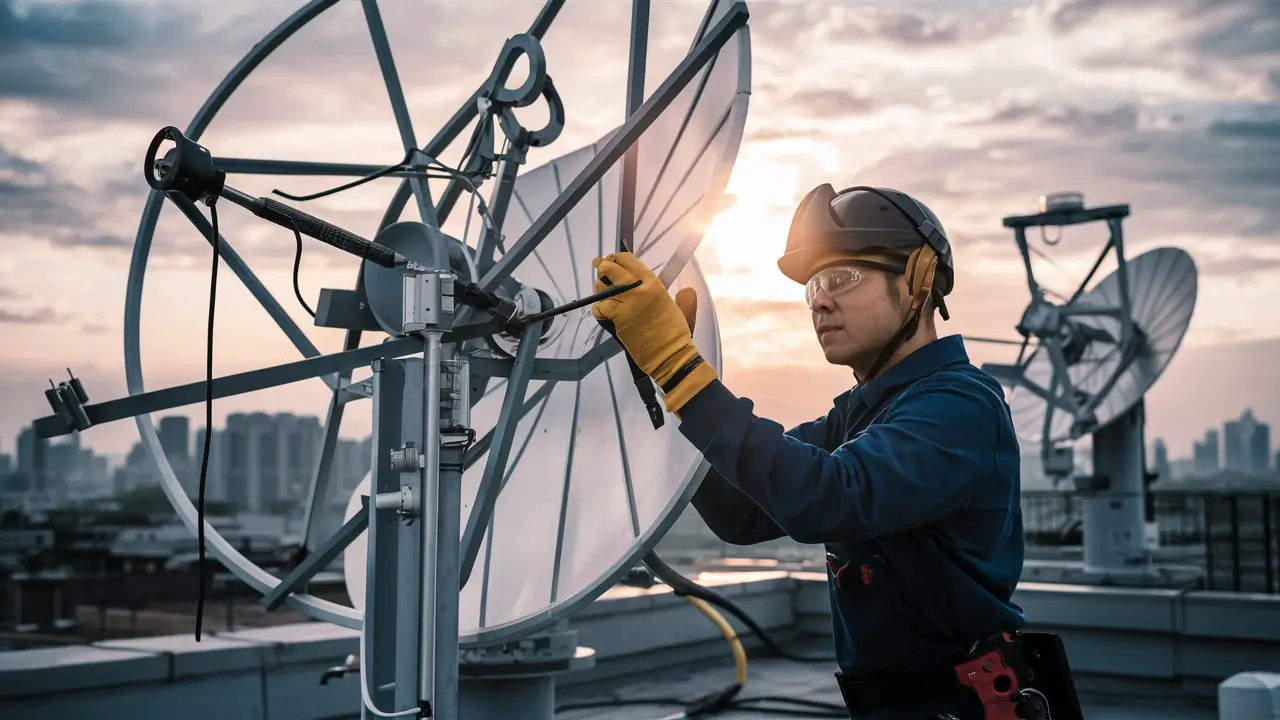
Satellite Dish Network Tips
Indeed, putting up a satellite dish network at home may not be easy but once you have the right reception and clear signal with hundreds of TV stations, it feels good. The most crucial aspect of satellite installation is to make sure that you have well-fixed your dish to allow the reception of signals. Here is a step-by-step guide on how to adjust your satellite dish network:
Prepare The Necessary Equipment
For this task, you will require the satellite dish, mounting bracket, coaxial cables, satellite finder or meter, wrench set, and a view of the southern sky. You should go through every manual and instruction of your satellite provider carefully so that you know everything about the entire setup.
Determine Azimuth, Elevation, and Skew
The azimuth is the horizontal turn of the dish, the elevation is the vertical angle, and the skew is the tilt angle. These specifications are normally included with the satellite dish system or can be obtained from your satellite DIRECTV service provider. They give you the precise azimuth and elevation your dish should be oriented to face the satellite.
Place it on top of the building
With the help of the mounting bracket, fix the dish to the exterior wall or roof with the best view of the southern sky. Make sure it will be able to cope with the conditions of storms, snow, etc. The mounting surface should be solid as much as possible to reduce movement and vibration on the surface.
Make Preliminary Adjustments
Rotate the dish roughly 180 degrees south using a compass so that it points the right way. Level the mounting bracket vertically up and down and horizontally from front to back depending on the requirement by using an inclinometer or the leveling bubbles provided at the base of the mounting bracket. Setting these up ahead of time helps to avoid having to guess them later on.
Connect The Satellite Finder
The satellite finder is an electronic device that has the capability of capturing satellite signals and comes equipped with LED signal strength lights. Locate the LNB arm at the front of the dish and find the end of the coaxial cable, then refer to the manual to connect it.
Detect The Satellite Signal
Switch on the satellite finder meter and, moving the dish horizontally, look at the signal strength LED lights and stop when the satellite is in the correct position. There may be an audible tone signaling the strength of the signal. Keep the position at the location where it was found once set.
Peak The Satellite Signal
Tilt the radar up or down while reading the meter to find the angle with the highest meter reading. Use a small angle change of about 5 or 10 degrees at a time. Perform the horizontal azimuth scan once more because the elevation shift may have caused the calibration to drift. Tighten all bolts and nuts once properly oriented.
Connect The Satellite Receiver
Once the dish has been preliminarily pointed, turn off the satellite finder bring the coaxial cable from the LNB arm inside, and connect it to the satellite receiver. Switch on the receiver and the TV and then go through the instructions on the screen of the receiver for channel scanning.
Fine-Tune Dish Alignment
If many channels are missing or if the reception quality is bad, then there is a need for you to make some adjustments to the dish alignment. Perform this process over and over again to achieve the best signal strength by the specifications of your receiver. Don’t go crazy and start changes – just turn and steer slowly and make changes subtly.
Check Signal Strength & Quality
See signal strength/quality indicators which are depicted in most satellite receiver menus in the form of bar graphs. You might want to refer to your receiver model specifications to determine the ideal percentage/quality that you should meet. Anything below that is considered suboptimal alignment. If the signal strength is too high, you may need a coaxial cable attenuator to prevent overloading.
Set Elevation Limits
Employ the dish interface bolts to mechanically lock some of the elevation movement over a certain vertical arc angle. This is because the dish cannot swivel beyond the limits and thus can avoid getting out of alignment due to strong winds or weather. The height needs to be sustained to allow proper reception to be achieved.
Secure the structure even more by installing guy wires.
In windy areas, nylon guy wires secured to mounted turnbuckles at the periphery of the dish offer a lot of reinforcement support and reduce wind oscillation that can pull signals off aim. In addition, measure tensions to ensure adequate toughness has been achieved.
Periodically Verify Signal Strength
Signal levels should be checked at least once in 6 months under different weather conditions. Whenever you observe that the signal strength has reduced, then you ought to make some slight adjustments. Check if there are any bolts, cables, or guy wires that need tightening to ensure the system’s optimal performance is achieved. Trim trees if they grow too tall and can obstruct the dish from view.
With little time and effort, you can be watching your favorite programs on clear satellite television just by applying these adjustment tips. Getting it right initially saves many problems later on. If you encounter any problems during the installation process, do not hesitate to contact your satellite provider or the installer for assistance. Facet alignment is most advantageous for programming content and stability.
Ready to upgrade your TV experience? Call us now at (877) 471-4808 to find the perfect Dish Network plan for you! Don’t miss out on great entertainment—our team is here to help you choose the best package and get you started today.





